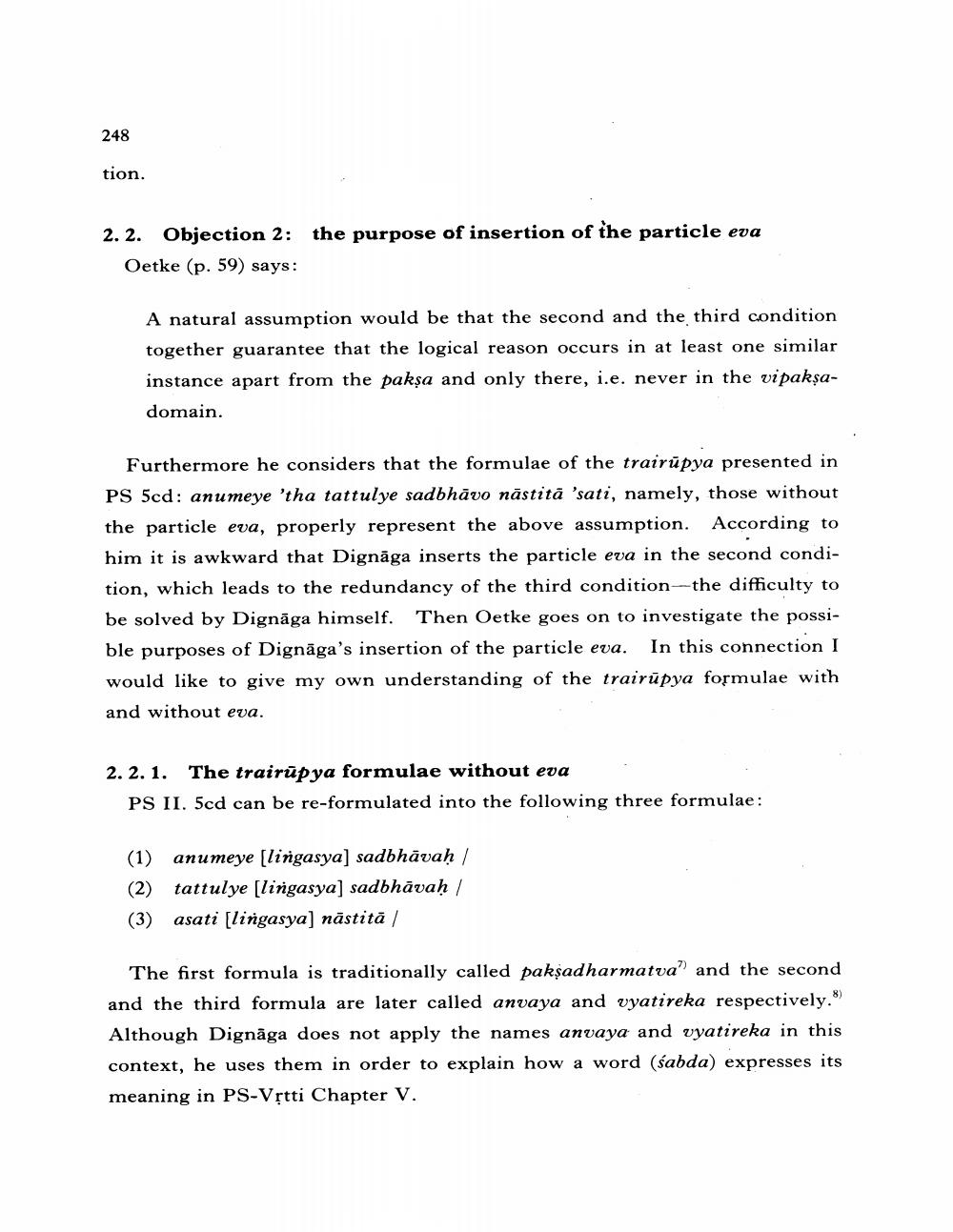________________
248
tion.
2. 2. Objection 2: the purpose of insertion of the particle eva
Oetke (p. 59) says:
A natural assumption would be that the second and the third condition together guarantee that the logical reason occurs in at least one similar instance apart from the pakșa and only there, i.e. never in the vipakșadomain.
Furthermore he considers that the formulae of the trairūpya presented in PS 5cd: anumeye 'tha tattulye sadbhāvo nāstitā 'sati, namely, those without the particle eva, properly represent the above assumption. According to him it is awkward that Dignāga inserts the particle eva in the second condition, which leads to the redundancy of the third condition--the difficulty to be solved by Dignāga himself. Then Oetke goes on to investigate the possible purposes of Dignāga's insertion of the particle eva. In this connection I would like to give my own understanding of the trairūpya foșmulae with and without eva.
2.2.1. The trairūpya formulae without eva
PS II. 5cd can be re-formulated into the following three formulae:
(1) anumeye [lingasya] sadbhāvaḥ / (2) tattulye [lingasya] sadbhāvaḥ / (3) asati (lingasya] nāstitā /
The first formula is traditionally called pakşadharmatva” and the second and the third formula are later called anvaya and vyatireka respectively.) Although Dignāga does not apply the names anvaya and vyatireka in this context, he uses them in order to explain how a word (śabda) expresses its meaning in PS-Vștti Chapter V.




